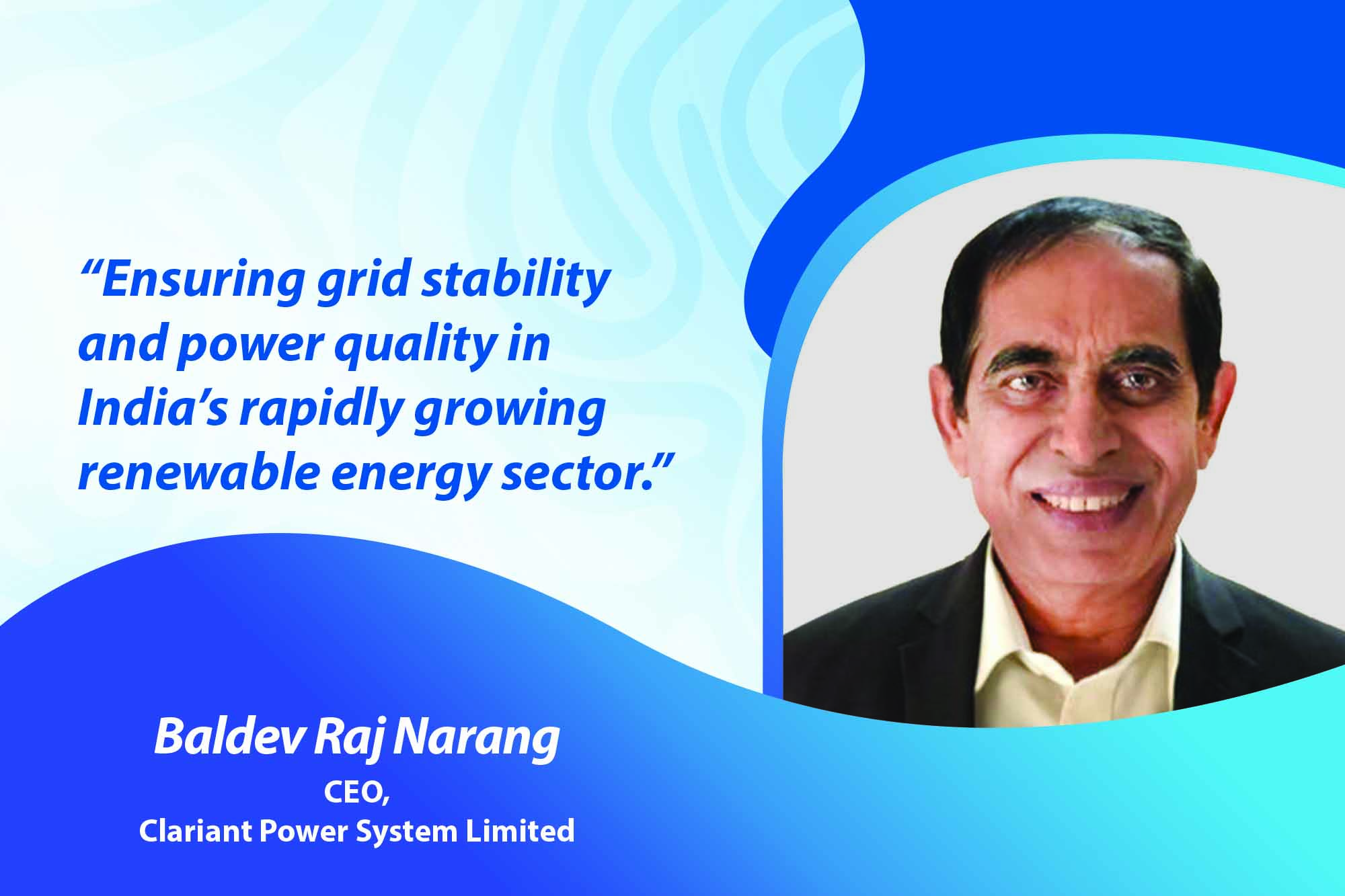Challenges in integrating large-scale renewable energy into urban power systems
By EPR Magazine Editorial June 25, 2024 5:37 pm IST
By EPR Magazine Editorial June 25, 2024 5:37 pm IST

Ensuring grid stability and power quality in India’s rapidly growing renewable energy sector.
Authored by: Baldev Raj Narang, CEO at Clariant Power System Limited
Renewable energy integration, mainly from solar and wind sources, poses significant challenges in urban areas. While domestic, commercial, and industrial installations present their issues, the most complex problems arise from utility-scale plants in remote locations. Despite thermal generation meeting over 60 percent of demand, renewable sources contribute about 42 percent, or 179 gigawatts, to the energy mix. Integrating these remote renewable plants into the grid introduces several key challenges.
One of the primary concerns is grid stability. Remote areas where these large-scale plants are typically located often have weak grid inertia. Conventional plants naturally provide inertia, but renewable plants, relying on inverters, lack this feature. This deficiency leads to issues during faults, as these systems struggle to maintain stability and often trip, causing significant power losses. In 2022 alone, there were 28 instances of large-scale renewable power isolation, resulting in over 1,000 megawatts of power loss.
There is a need for dynamic reactive power support to address these stability issues. Traditional switched capacitor banks cannot provide the instant support required during faults. The Central Electricity Authority (CEA) mandates using static compensators (statcoms) with around five milliseconds response times. These statcoms help supply reactive power, maintaining voltage levels and grid stability during disturbances.
Another significant challenge is the nature of the inverters used in these renewable plants. Most current inverters are grid-following and do not provide the necessary inertia. Solutions include installing synchronous condensers or ensuring inverters have battery backups to supply reactive power during faults.Large-scale renewable integration also introduces power quality issues, primarily due to harmonics. Unlike conventional thermal or hydroelectric plants, renewable installations generate high-frequency harmonics, which standard passive filters cannot mitigate. These harmonics, ranging up to the 49th order, require specialised high-pass or C-type filters. Ensuring high-quality inverters and proper system modelling prevents oscillatory behaviours and maintains power quality.
The primary issues are related to power quality rather than grid stability for smaller installations in urban areas, such as domestic rooftop units or commercial setups. These units can generate power quality issues that must be identified and mitigated through thorough power quality studies and appropriate harmonic filtering.
India, the fourth-largest renewable energy market globally, aims to achieve 500 gigawatts of renewable capacity by 2030. This ambitious target requires adding 44 gigawatts annually, necessitating stringent measures to ensure grid stability and power quality. Regulatory bodies like the CEA have mandated specific norms to address these challenges, including dynamic reactive power support and adherence to IEEE 519 standards for harmonic limits.
Addressing these challenges is critical as India transitions towards 100 percent renewable energy. Ensuring grid stability, improving power quality, and implementing robust regulatory measures are essential to integrating large-scale renewable energy into the urban power system. By focusing on these areas, India can continue to expand its renewable energy capacity while maintaining a reliable and stable power grid.
We use cookies to personalize your experience. By continuing to visit this website you agree to our Terms & Conditions, Privacy Policy and Cookie Policy.